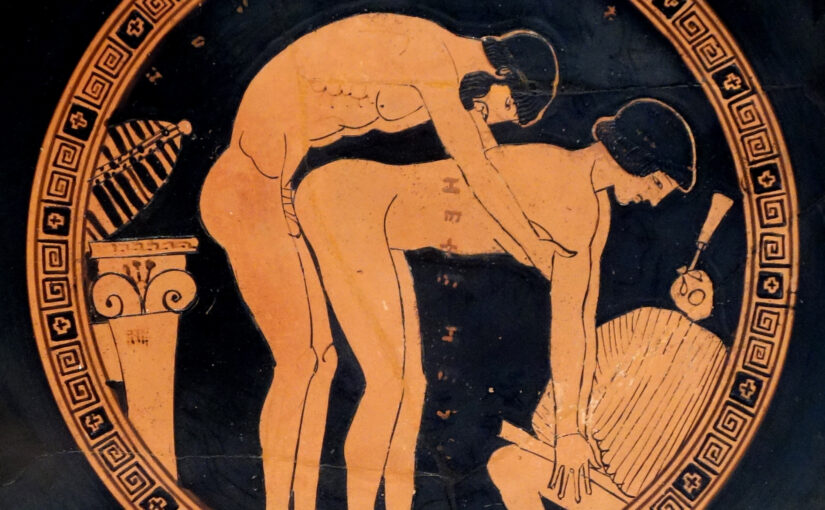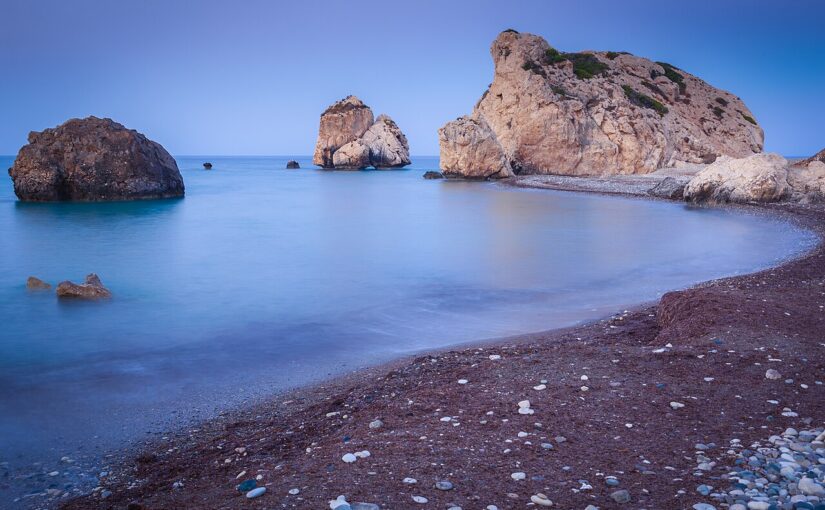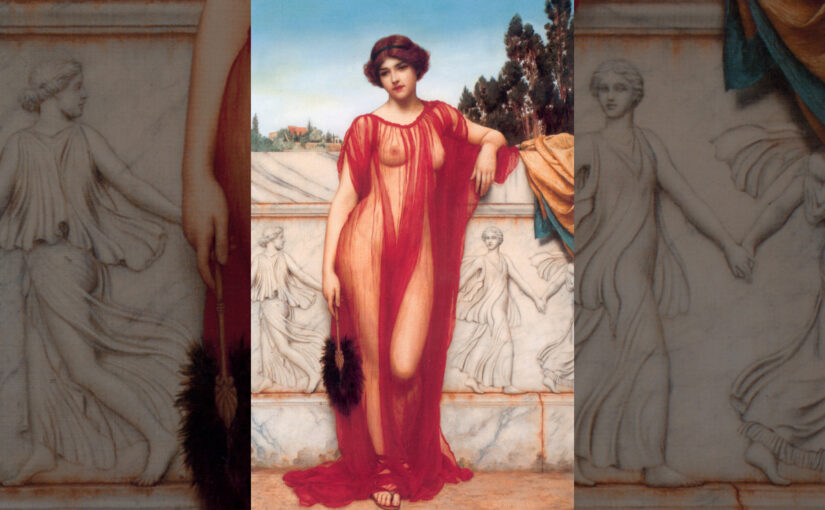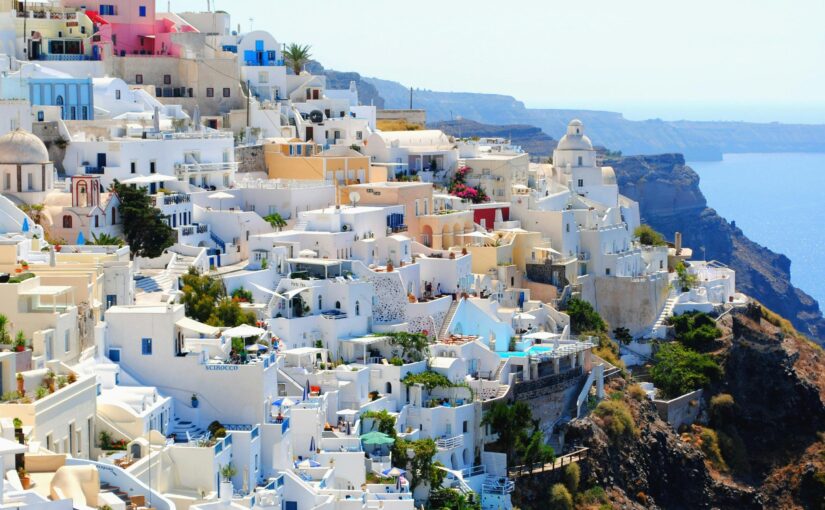Travelers have always sought the secrets of the places they visit: the perfect wine, the hidden beach, the recipe that tastes like sunlight and stone. But few quests are as ancient, universal, or hilariously optimistic as the search for aphrodisiacs. From Roman banquets to Biblical landscapes, Mediterranean cultures pursued love potions with the same enthusiasm they brought to philosophy, architecture, and conquest. Some of these remedies were harmless (if largely symbolic). Others were outright deadly. Here’s what our ancestors believed could stoke the fires of desire, and what modern science has to say when it bothers to look.
Continue reading Ancient Love Potions: The Mediterranean’s Most Famous (and Infamous) AphrodisiacsAuthor: admin
Saint Paul, on the Island of Aphrodite
Cyprus shimmers in the eastern Mediterranean like a jewel set between continents, its sun-bleached limestone cliffs rising from turquoise waters that have witnessed millennia of myth and miracle. This is the Island of Aphrodite, where ancient Greek legends speak of the goddess of love emerging from seafoam, and where Christianity took root through the footsteps of Saint Paul. Few places on earth weave together divine mythology and sacred history quite like Cyprus, where pagan temples and early Christian basilicas stand as neighbors, and where travelers can trace the paths of both deities and apostles across a landscape that refuses to choose between its storied pasts.
Continue reading Saint Paul, on the Island of AphroditeGlitter and Shadows on the Côte d’Azur: Inside Nicolas Bedos’ Mascarade
The French Riviera has long seduced filmmakers with its promise of crystalline waters, palm-fringed promenades, and golden light that transforms every frame into a postcard. Nicolas Bedos’ 2022 film Mascarade embraces this visual splendor wholeheartedly, yet beneath the sun-drenched glamour lies something far more sinister: a web of deception, longing, and emotional ruin that contrasts sharply with the azure beauty of Nice, Cannes, and Antibes. This is not the lighthearted romp its glossy surfaces suggest, but rather a bittersweet exploration of flawed souls playing dangerous games with hearts and fortunes.
Continue reading Glitter and Shadows on the Côte d’Azur: Inside Nicolas Bedos’ MascaradeUnveiling the Timeless Allure of “Athenais”
In the sun-drenched realms of Victorian neoclassicism, John William Godward crafted visions that transport viewers to an idealized ancient Mediterranean world, where marble gleams under eternal light and draped figures embody serene elegance. His 1908 oil painting “Athenais” stands as a captivating example, drawing on the myths and aesthetics of classical Greece to evoke a sense of languid beauty amid opulent surroundings. This work, now housed in a private collection, measures about 101 by 61 centimeters and captures a moment of quiet introspection that resonates with the artistic traditions of the Mediterranean’s storied past.
Continue reading Unveiling the Timeless Allure of “Athenais”Spaghetti al Limone 🍋✨
Spaghetti al Limone transforms just a handful of simple ingredients into a stunning Italian classic that tastes like sunshine on a plate. This bright, creamy pasta balances the tang of fresh lemon against the savory richness of Parmesan cheese, creating a dish that’s both refreshing and deeply satisfying. The magic lies in its simplicity: when you work with so few components, each one shines through, making this the perfect recipe to showcase quality ingredients without spending hours in the kitchen. Whether you’re craving a taste of the Amalfi Coast in winter or need a light, quick dinner that doesn’t heat up the kitchen in summer, this pasta delivers pure Italian joy in every twirl of your fork.
Continue reading Spaghetti al Limone 🍋✨🥜 Creamy Turkish Nut Dip (Tarator)
Few dishes capture the essence of Mediterranean hospitality quite like a bowl of silky tarator. This traditional Turkish nut dip transforms humble ingredients into something extraordinary. Toasted nuts blend with bread, olive oil, and bright lemon into a velvety sauce that’s equally at home alongside grilled fish or scooped up with warm pita bread. 🍋✨
What makes tarator so beloved is its remarkable versatility and depth of flavor. Each spoonful delivers richness from the nuts, brightness from lemon, and a subtle warmth from garlic and cayenne. The texture is luxuriously smooth, yet the preparation couldn’t be simpler. Whether you’re hosting a meze party or seeking an elegant accompaniment to roasted vegetables, this dip delivers sophistication without fuss.
Continue reading 🥜 Creamy Turkish Nut Dip (Tarator)The Mediterranean Diet Pyramid: A Timeless Guide to Healthy, Flavorful Living
Nestled between sun-drenched coasts and ancient olive groves, the Mediterranean Sea cradles a tapestry of cultures that have shaped the world’s most celebrated way of eating. From the rolling hills of Italy and France to the vibrant shores of Spain in the north, the eastern embrace of Greece, Turkey, Israel, Lebanon, and Syria brings layers of history and spice. Further south, the North African nations of Egypt, Tunisia, Morocco, Algeria, and Libya add their own earthy rhythms to the mix. This mosaic of lands fosters cuisines as varied as the landscapes themselves: think of the tagines simmering with cumin and preserved lemons in Morocco, or the simple pasta al pomodoro bursting with fresh basil in southern Italy. Yet beneath these differences lies a shared foundation, a dietary philosophy that prioritizes abundance from the earth and sea. This is the heart of the Mediterranean diet, a pattern of eating that transcends borders and invites everyone to savor life through wholesome, vibrant foods.
Continue reading The Mediterranean Diet Pyramid: A Timeless Guide to Healthy, Flavorful LivingTides of Flavor: Everyday Stories from Greek Island Kitchens
The sea runs through everything here. You can taste it in the food, sense it in the air, feel it in the way people speak about their islands with a kind of intimate possession. This is not isolation, though the word itself shares ancient roots with the Greek nesos, both tracing back to the Latin insula. These rocky outcrops scattered across the Aegean and Ionian have never been cut off from the world. They have always been crossroads, meeting points for sailors and merchants, conquerors and refugees, each wave of arrivals leaving something behind in the kitchens of stone houses perched above the water.
Continue reading Tides of Flavor: Everyday Stories from Greek Island KitchensGolden Pumpkin Fritters: A Taste of Greek Summer
The aroma of garlic and spearmint wafting from a hot frying pan, the satisfying sizzle as golden patties turn crispy at the edges, and the promise of a cool glass of ouzo waiting nearby 🍷 These are the sensory moments that make kolokythokeftedes one of Greece’s most beloved vegetarian mezze dishes. While traditionally crafted with fresh zucchini during peak summer harvest, these pumpkin fritters offer a sweeter, earthier twist that transforms a simple appetizer into something truly special. Perfect for late afternoon gatherings when the Mediterranean sun begins its descent, these crispy-on-the-outside, tender-on-the-inside fritters embody everything wonderful about Greek taverna culture.
Continue reading Golden Pumpkin Fritters: A Taste of Greek SummerHow to Make Dreamy, Velvety Hummus in Minutes
Creamy, velvety, and impossibly smooth, this classic hummus transforms a handful of pantry staples into something far greater than the sum of its parts. 🌟 The secret lies not in exotic ingredients or complex techniques, but in understanding how to coax the perfect texture from humble chickpeas. Unlike the grainy, dense versions that often disappoint, this recipe delivers the kind of hummus that makes you reach for another pita chip, then another, until the bowl is empty and you’re planning your next batch.
Continue reading How to Make Dreamy, Velvety Hummus in Minutes








